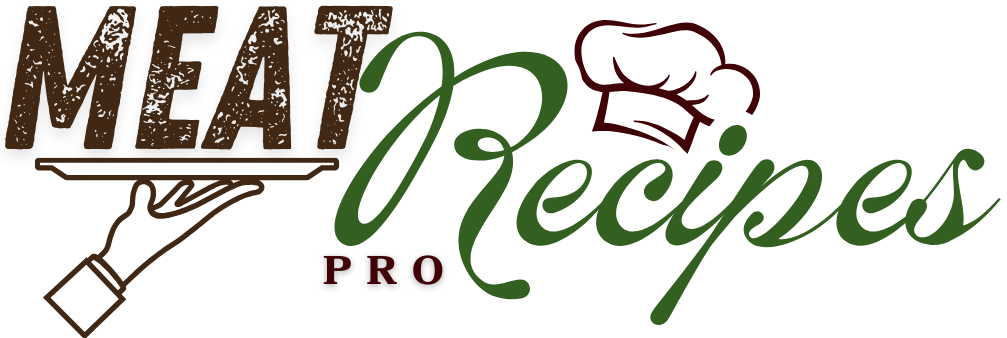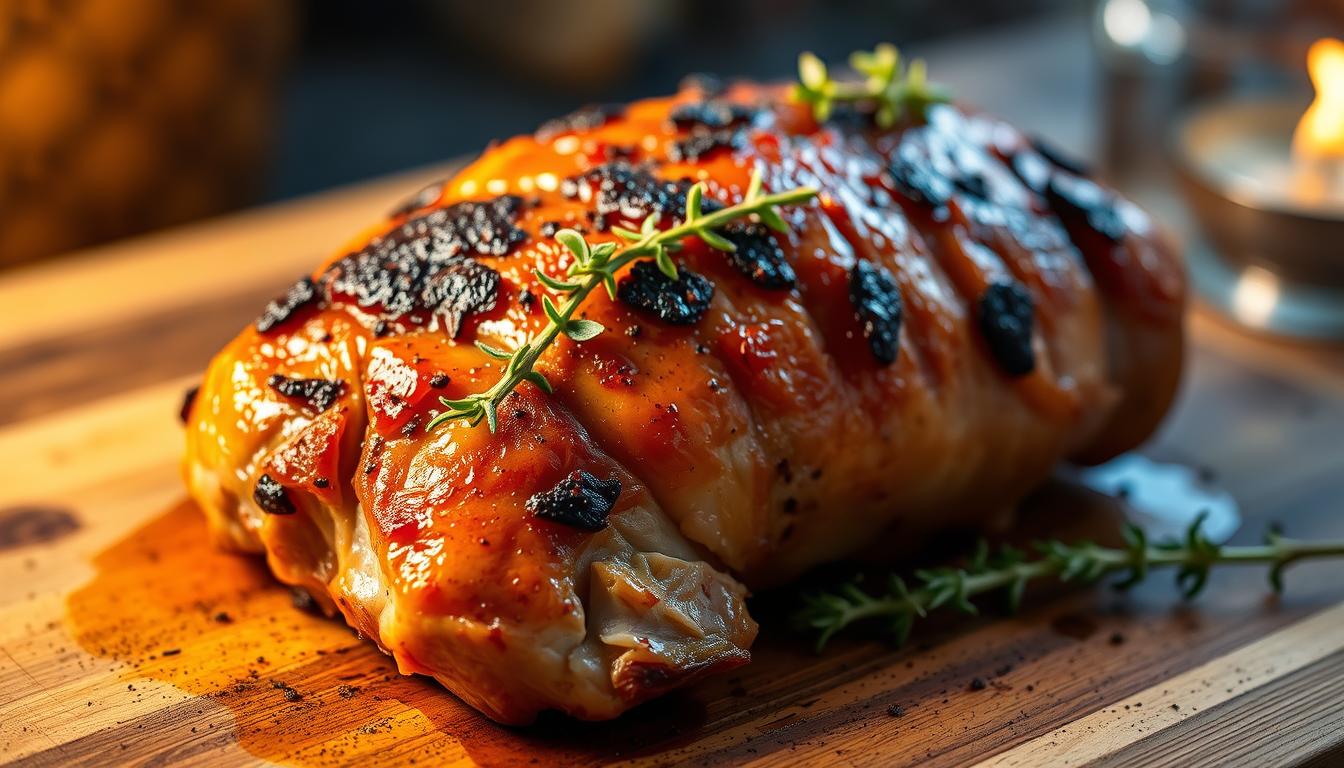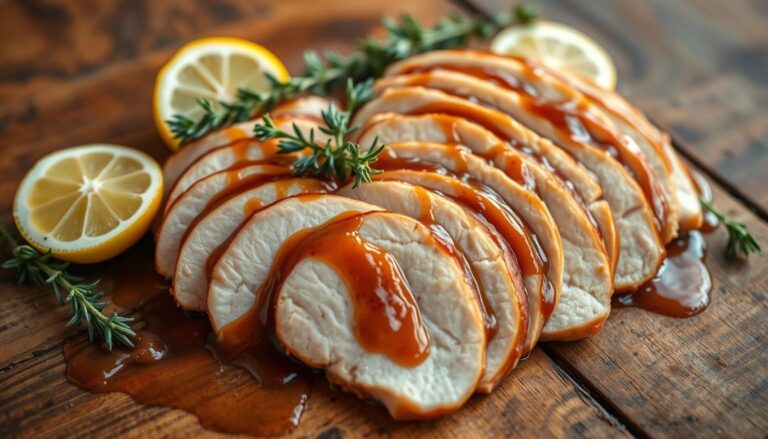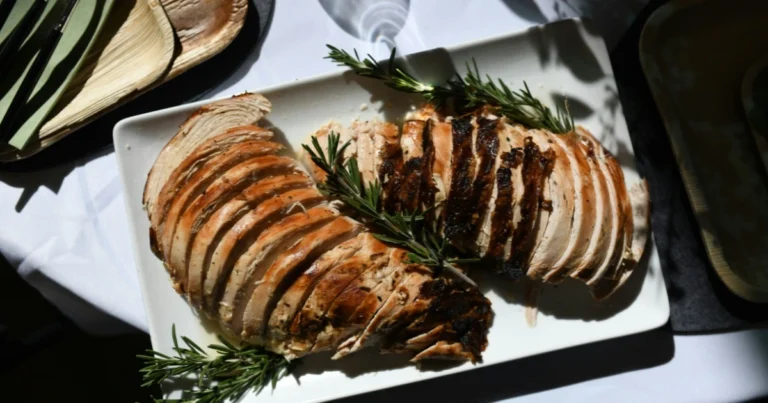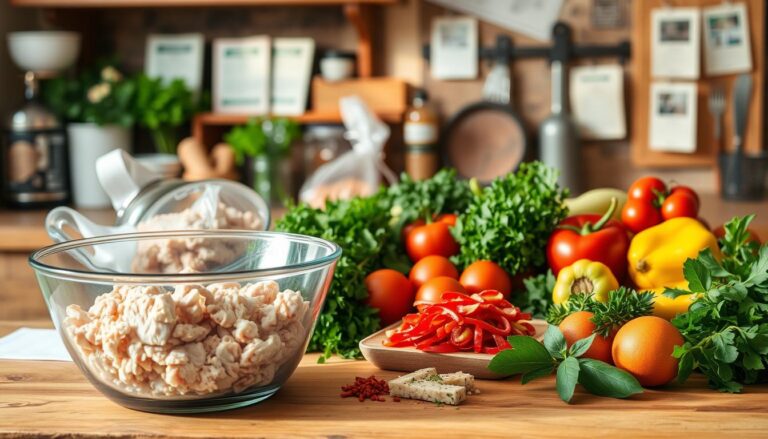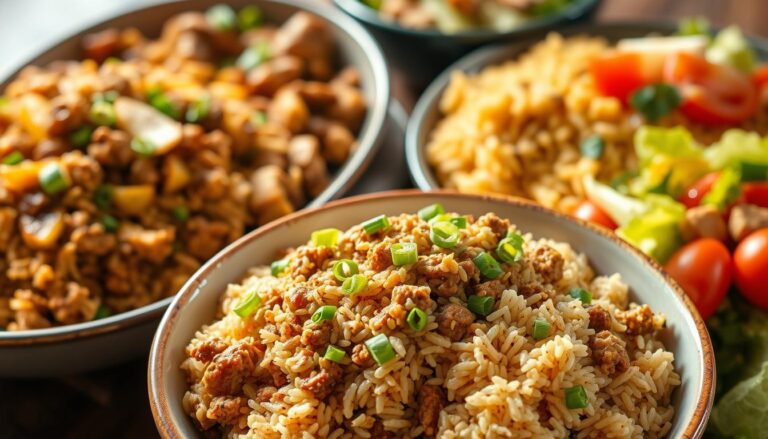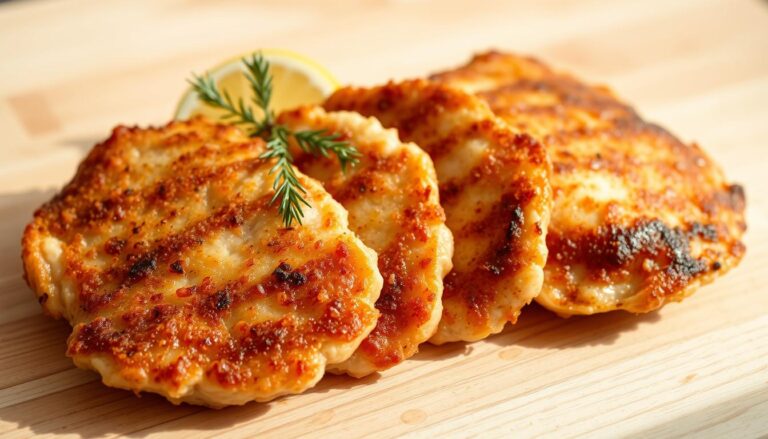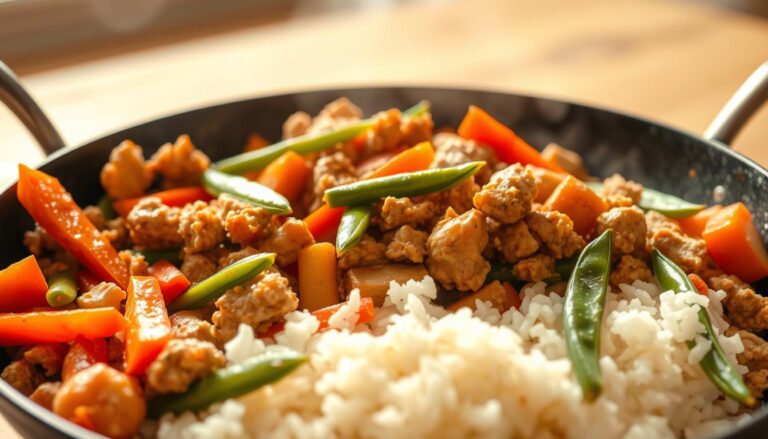Discover Delicious Recipes for Smoked Turkey Breast
Recipes for smoked turkey breast are the perfect way to bring tender, smoky flavor to your table. Whether you’re planning a holiday feast or a simple weekend cookout, this guide will help you achieve juicy slices every time. With step-by-step tips, you’ll learn how to lock in flavor, control the smoke, and serve a dish that impresses with both taste and texture.
You’ll learn tried-and-true methods — injections, wet brines, and smart dry rubs — plus tips on pellet smokers and temperature control. Short, clear instructions make it easy to track minutes per pound and the internal temperature targets that protect moisture.
Whether you use applewood pellets, a Camp Chef Woodwind, or an electric model, this intro sets the stage for confident cooks. Expect simple language, exact times, and real troubleshooting so your meat comes off the smoker juicy and ready to serve.
Table of Contents
Why you’ll love smoked turkey breast right now
A smoked turkey breast is ideal when you want juicy white meat without carving a whole bird. It feeds a small group of six to ten and saves you the extra time and cleanup of a full roast.
Smoking adds layered flavor that’s hard to get any other way. An injection or a rub keeps the meat moist while the smoker adds a gentle wood note. The skin crisps up nicely if you finish at higher heat.
You’ll love how predictable the cooking schedule becomes. Plan by minutes per pound, then let the breast rest 20–30 minutes after pulling it. That short rest redistributes juices so slices stay moist and neat on the cutting board.
- Perfect portion size for small gatherings and less waste.
- Customizable seasoning—mild herbs or bold paprika and pepper.
- Less carving, easier cleanup, and reliable texture at home.
“A light touch of salt and aromatics transforms the meat without hiding its clean flavor.”
Ingredients, rubs, and the gear you need to smoke turkey breast
Start by assembling a compact kit of ingredients and tools that will keep your meat moist and full of flavor.
Essential ingredients: stock your pantry with butter, oil, Worcestershire, fresh lemon, ground sage, dried thyme, garlic salt, and onion salt. These elements make a rich injection that pushes flavor deep into the breast.
Key flavor blends
Mix a dry rub of paprika, chili powder, garlic salt, onion salt, seasoning salt, and black pepper. Add butter under and over the skin so the rub adheres and the meat stays juicy.
Core toolkit
Use a heavy-duty injector with a large bore to move herbed butter without excessive holes. A wireless probe thermometer lets you monitor internal heat without opening the smoker.
“A quality thermometer and a simple rub are worth more than complex tricks.”
| Item | Use | Recommendation |
|---|---|---|
| Pellet/electric smoker | Even heat and smoke control | Camp Chef Woodwind or Masterbuilt |
| Pellets / wood | Flavor profile | Applewood mild; mesquite/cherry for bold |
| Injector & thermometer | Seasoning and safety | Large-bore injector; wireless probe |
| Drip pan | Catch drippings, make gravy | Stainless pan under indirect heat |
- Measure salts and spices by teaspoon and tablespoon to stay consistent.
- Pat the breast dry and season at room temperature so the rub sticks and browning is even.
- Plan enough time to brine or inject ahead; this saves cooking time and boosts moisture.
Best recipes for smoked turkey breast: brine, injection, and rub paths
Pick a path—brine, injection, or rub—and you’ll set the tone for the whole cook. Each method changes texture, salt balance, and how wood smoke interacts with the meat.
Wet brine for maximum moisture and even cooking
Wet brine blends vegetable stock, kosher salt, pepper, rosemary, and thyme. Chill and submerge 8–12 hours. Optional bay leaves or citrus brighten the result.
Do not brine over 24 hours to avoid a mushy texture.
Dry brine for crisp skin and concentrated flavor
Rub kosher salt, pepper, thyme, rosemary, brown sugar, and lemon zest into the skin. Refrigerate uncovered 24–48 hours so the skin dries and seals during the smoke.
Injection marinade to lock in butter, herbs, and Worcestershire
Mix melted butter, oil, Worcestershire, water, lemon juice, sage, thyme, garlic salt, and onion salt. Inject with minimal punctures; create one hole and redirect the needle to distribute the liquid.
Signature dry rubs: paprika, garlic, onion, pepper, and a touch of sugar
Build a balanced rub with paprika, chili powder, garlic and onion salts, seasoning salt, and black pepper. Massage under and over the skin with butter and let rest 1–24 hours.
“A short brine then a light rub gives you the best of both worlds.”
- You can combine methods or keep a single path based on time and taste.
- Adjust sugar to encourage browning without making the meat overly sweet.
- Make sure to reduce added salt if the bird is pre-brined.
Step-by-step smoking methods: low-and-slow, hot finish, and foil wrap timing
Start by stabilizing your smoker and bringing the breast to room temperature so heat moves evenly from edge to center. Set a reliable probe thermometer into the thickest part before you close the lid.
225–250°F pellet smoker, steady smoke
Place the bird in a pellet smoker at about 225°F. Use applewood for a mild smoke. Cook to 160°F internal temperature; carryover will raise it to 165°F. Allow a 20–30 minute rest.
275°F method with foil wrap
Preheat to 275°F and monitor the probe. Smoke unwrapped until the internal temperature hits ~150°F. Move the breast into an aluminum tray, wrap, and finish to 165°F. Rest 30 minutes before slicing.
Two-stage hot finish
Smoke 1.5 hours at 225°F, baste with melted butter, then increase smoker to 350°F to crisp and finish to 165°F. Rest 15–20 minutes.
“Track progress with a thermometer, not just the clock—minutes and hours vary with outdoor conditions.”
- Tip: Front-load your smoke; wrap near 150°F to protect moisture.
- Slice against the grain in even pieces and save drippings.
- Record which method matches your timing and texture goals.
Time and temperature guide: minutes per pound, internal temperature, and rest
A clear timeline and temp plan takes the guesswork out of your next smoke session. Use minutes per pound as your baseline, then verify with a probe to hit a safe internal temperature.
Cook time by smoker temperature and turkey size
Estimate your schedule with these rules of thumb: about 30 minutes per pound at 225°F, 25 minutes per pound at 250°F, and roughly 13 minutes per pound at 350°F.
Many cooks find 275°F a reliable temperature. A 4–6 pound turkey breast at 275°F often finishes in ~3–4 hours, depending on your smoker and outdoor conditions.
Using a meat thermometer to reach 165°F safely
Place the probe in the thickest part of the breast and trust the thermometer over the clock. Make sure the final internal temperature reads 165°F in the deepest section.
Check temperature in more than one spot to avoid undercooked pockets. Factor in prep and preheat time so the full recipe timeline is accurate.
“Use a meat thermometer with an alarm to track progress without opening the lid.”
Reduce added salt if the bird was pre-brined. Remember, size and starting temperature change total minutes, so monitor temps, not just time.
Wood, pellets, and flavor: applewood, cherry, mesquite, and smoke intensity
Start by deciding if you want a soft, sweet smoke or a deeper, savory one. Your wood choice sets the tone more than any rub. Applewood pellets give a gentle, sweet note that pairs well with delicate white meat.
Pick a bolder path with a mesquite and cherry blend. Mesquite brings strength; cherry adds a fruity lift. Use that combo when guests prefer a stronger smoke profile.
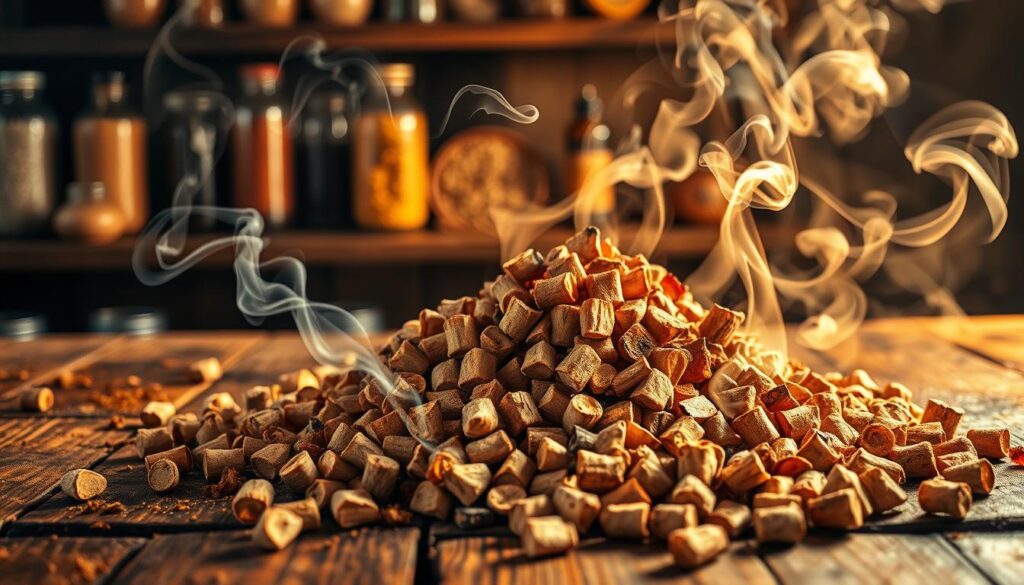
Placement and basting tips
Place the breast skin-side-up so rendered fat can baste the meat. Near the end, brush with melted butter and raise the temperature to crisp the skin.
- Keep smoke thin-blue; thick smoke tastes bitter.
- Run pellets or chips steadily and avoid opening the smoker too often; gaps cost temperature and add hours.
- You can use an electric, pellet, gas, or charcoal grill with indirect heat—just hold a steady temperature.
“Let the wood lead the flavor; season lightly with a pinch of salt and track which pairing becomes your repeat winner.”
Serve, store, and reheat: sides, sandwiches, and leftover ideas
After the smoker cools, the final steps—resting, slicing, and plating—decide how the meal reads at the table. Let the bird sit at room temperature, loosely tented, and plan 15–30 minutes of rest so juices settle into the meat.
Let it rest and slice against the grain
Resting keeps slices tender. Slice across the grain in even pieces and arrange on a warm platter so every plate gets moist slices.
Side dishes that pair well
Serve classic sides: mashed potatoes, green beans, gravy, and cranberry sauce. Thin slices also shine cold in sandwiches or on a salad the next day.
Storing and reheating without drying out
Store leftovers in airtight containers in the fridge up to 4–5 days or double-wrap and freeze up to 2–3 months. Label packs with the date so you rotate them.
Reheat wrapped in foil at 325°F until just heated through. Reserve drippings to moisten slices or to make gravy that restores lost juices.
Variations, equipment swaps, and make-ahead tips
Small swaps in gear or brining can reshape your cook from basic to reliably juicy. Choose the roast that matches your time and presentation goals before you light the fire.
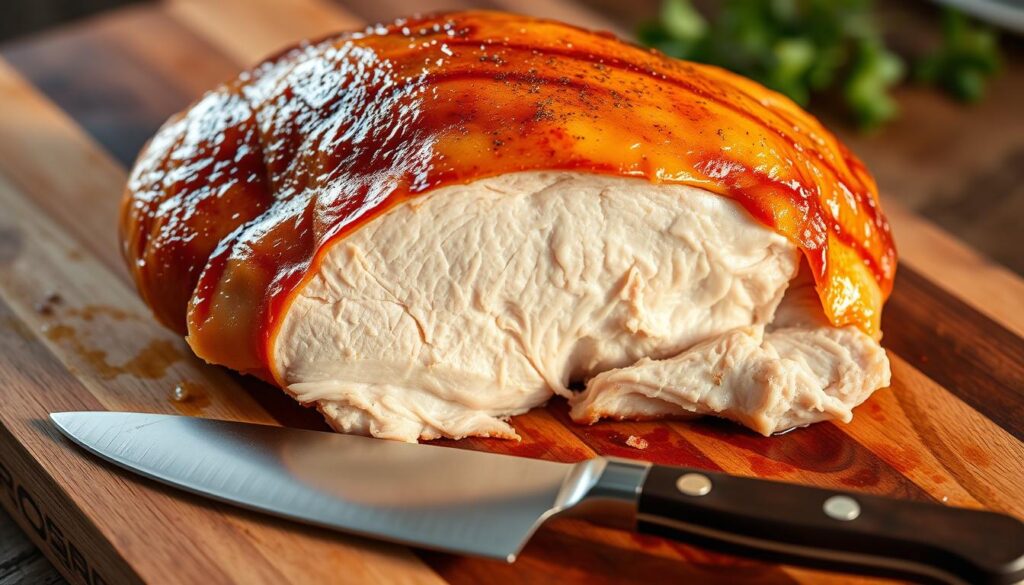
Boneless vs. bone-in: when to brine or inject
Boneless half-roasts around 3 lb often skip a long brine. A butter baste and a hot finish keep these pieces moist and speed cooking.
Use a wet brine (8–12 hours) or a dry brine (24–48 hours) on larger, bone-in roasts. If you’re short on time, an injection gives fast, deep flavor without long soak times.
Adapting to pellet, electric, gas, or charcoal
Any grill or smoker works with indirect heat. Set up a cool zone, run steady fuel, and use a probe thermometer to track the thickest part.
If you use a pellet model, lean on low smoke. Gas and electric units need steady temps; charcoal can add bold flavor if you control air flow.
“Bring the roast toward room temperature before cooking and resist overcooking—fat management and timing make the difference.”
- Keep netting on boneless roasts for shape or remove to season every piece thoroughly.
- Scale to a whole turkey by planning ~30 minutes per pound at 225°F and adding fuel time.
- Note size and shape: they change airflow, carryover, and final texture—track what works and repeat it.
Conclusion
, A clear finish ties technique, timing, and taste into a repeatable plan you can trust. Pick the recipe that fits your schedule—wet brine, dry brine, injection, or a simple rub and butter baste—and keep the process simple.
Make sure you use a reliable meat thermometer and stop at an internal temperature of 165°F. Rest the roast 15–30 minutes so juices settle and slices stay moist.
Match your wood to the meal—applewood for mild or a mesquite-cherry blend for bold smoke. Add a two-stage finish at 350°F with a butter baste if you want crisp skin.
Store leftovers in the fridge 4–5 days or freeze 2–3 months. Reheat wrapped at 325°F and enjoy your next smoke turkey session with confidence.
